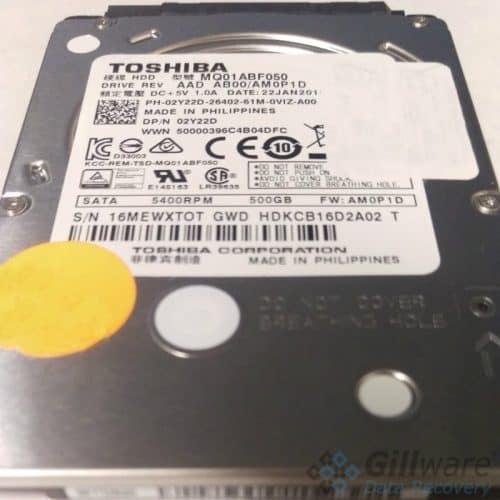How Does a Hard Drive Store Data?
Have you ever wondered how hard drives work? Are you curious what a hard drive does for your computer? Maybe you’re thinking “How does a hard drive store data?”. If any variation of these questions has crossed your mind, you are in the right place.
What Does a Hard Drive Do for a Computer?
Hard drives are responsible for storing electronic data. Unless you are using a technically advanced setup with a bootable USB flash drive or network drive for data storage, the computer you are using right now has a hard drive that holds your operating system, files, apps, and any other data you may have. Without hard drives or a suitable replacement, computers would be nothing more than a collection of metal and plastic.
Hard disk drives have been a popular data storage appliance for the entirety of the 21st century. With widespread popularity comes widespread misunderstanding, so if you want to learn more about how hard drives work, read on.

How Does a Hard Drive Work?
There are a number of hard drive varieties, but the two most common are hard disk drives (HDD) and solid state drives (SSD). This article will be concerned with the former. For more information on the latter, you can visit Gillware’s What is a SSD posting. The following section will describe the individual components of hard disk drives and how these components work together to store data.
What’s in a Hard Drive?
Before we can describe how a hard drive stores data, we will first need to become acquainted with the various parts that make up the hard disk drive. There are several major components that are essential to every hard disk drive.
Case: Modern hard drives will be 2.5 inches for laptops and 3.5 inches for desktops.
Platter(s): Shiny disks that actually store the data. There will almost certainly be more than one, but it is within the realm of possibility that your hard drive has one platter.
Spindle Motor: Responsible for spinning the platters when the hard drive is connected to a power supply. The platters will also rest on the spindle motor.
Read-Write Heads: Pointy pieces of metal that transmit or receive electrical current. As you may have already determined, read-write heads are responsible for reading or writing data.
Head Stack: A metal container that is used to hold the read-write heads.
Actuator Arm: A metal arm to move the head stack (the piece of metal that’s moving in the video).
Motor for the Actuator Arm: Connected to the other end of the actuator arm, enables the arm to move.
How Does a Hard Drive Store Data?
When you apply power to a hard disk drive, the platters will start spinning in preparation for reading and writing data. The actuator arm will position the head stack mere nanometers above the platter(s). The head stack / read-write heads should never actually touch the platters in a hard disk drive. When you save a file, it is transmitted to the hard drive, where it will be converted from human-readable information to binary (1s and 0s). This binary data travels to the head stack, where the read-write heads will produce a lasting magnetic field that indicates 1 or 0. The inverse process occurs when you read data from a hard disk drive.
Did you wonder why the word lasting uses bold and italic font? That word is the key difference between volatile memory and non-volatile memory. Electronic data storage that will maintain it’s state (the files / data it contains) without power is what is considered non-volatile memory. On the other hand, volatile memory, like random access memory (RAM) will essentially be erased when it is not receiving electricity from your computer. These two concepts are why many computer professionals will refrain from using the word memory to describe devices like hard drives or flash drives. Instead, the word storage indicates that these devices will maintain the data they hold when the device is not connected to a power supply.
Conclusion
Hard disk drives are an effective data storage solution that’s widely used around the world. While some professionals will adamantly endorse solid state drives, hard disk drives offer their own set of advantages. If you started this article wondering “How does a hard drive store data”, now you should be able to describe the process in detail. It’s unlikely that the topic will be broached at your next dinner party, but if a friend or family member is ever wondering how hard drives work, you can be an authority on the topic.
